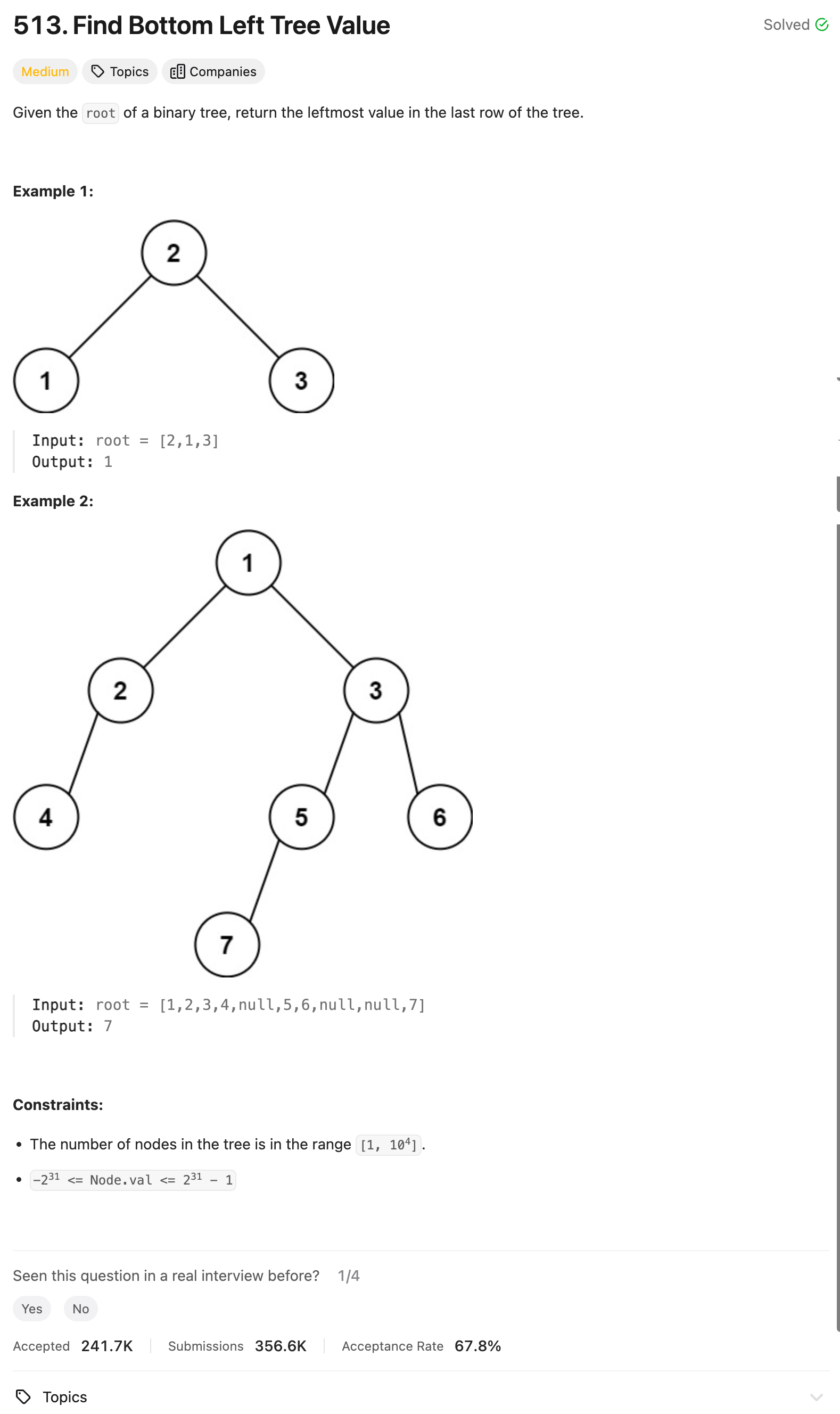Problem of The Day: Diameter of Binary Tree
Problem Statement
Intuition
My initial thought is to perform a level-order traversal of the tree using a queue and keep track of the leftmost node at each level.
Approach
I will use a queue to perform level-order traversal. At each level, I will update the leftmost node, and after the traversal, the leftmost node in the bottom level will be the result.
Complexity
-
Time complexity: O(n) where n is the number of nodes in the binary tree. We visit each node once.
-
Space complexity: O(w) where w is the maximum width of the tree (maximum number of nodes at any level). In the worst case, the queue can contain all nodes at the last level, so the space complexity is proportional to the width of the tree.
Code
# Definition for a binary tree node.
# class TreeNode:
# def __init__(self, val=0, left=None, right=None):
# self.val = val
# self.left = left
# self.right = right
class Solution:
def findBottomLeftValue(self, root: Optional[TreeNode]) -> int:
queue = deque()
queue.append(root)
res = root
while queue:
N = len(queue)
for i in range(N):
node = queue.popleft()
if i == 0:
res = node
if node:
if node.left:
queue.append(node.left)
if node.right:
queue.append(node.right)
return res.val
Editorial Solution
Approach 1: Depth-First Search
class Solution:
def findBottomLeftValue(self, root: Optional[TreeNode]) -> int:
self.maxDepth = -1
self.bottomLeftValue = 0
self.dfs(root, 0)
return self.bottomLeftValue
def dfs(self, current: TreeNode, depth: int):
if not current:
return
if depth > self.maxDepth: # If true, we discovered a new level
self.maxDepth = depth
self.bottomLeftValue = current.val
self.dfs(current.left, depth + 1)
self.dfs(current.right, depth + 1)
return
Approach 2: Breadth-First Search Right to Left
class Solution:
def findBottomLeftValue(self, root):
queue = deque()
current = root
queue.append(current)
while queue:
current = queue.popleft()
if current.right:
queue.append(current.right)
if current.left:
queue.append(current.left)
return current.val
